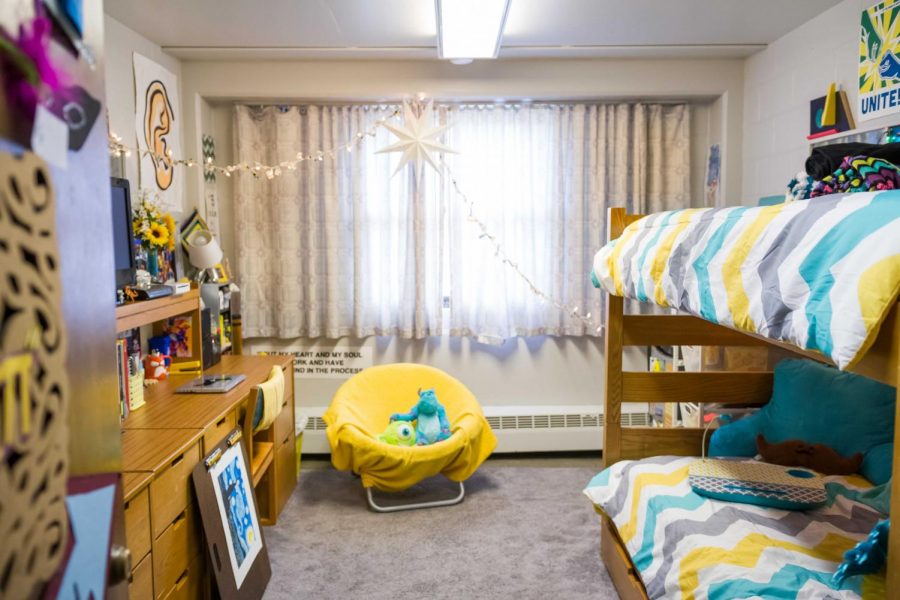Connect with nature from comforts of a dorm
A decorated dorm room in Taft-Van Doren hall rests empty in August 2015.
Jul 31, 2020
The Midwest provides the most biodiversity in America. Champaign-Urbana and its surrounding areas harbor some of this unique wildlife. It’s not uncommon to see University students immerse themselves in these places for fun or work with various environment clubs. However, traveling is not as encouraged now due to the pandemic. There are many other things you can do to get the best nature experiences from “The Prairie State” without even leaving your dorm room.
Get a plant
Plants cleanse the air around us and have been linked to reducing stress, so can you trust somebody who doesn’t have a real plant in their house/dorm? Some plants are easy to take care of as you water them, give them proper sunlight and even stimulate their growth by playing classical music. If you’re a beginner, Spider Plant, Pothos and Snake Plant are perfect starter plants. Some plants can also be used as natural remedies, which have been in existence for thousands of years. Now, this doesn’t mean you should use plants over the advice of a medical professional, but some can help with minor medical issues. For example, the juice from aloe vera helps alleviate sunburns.
Start an herb garden
Spicing up your dorm room with an herb garden gives a new meaning to a “plant-based” diet. In theory, people don’t need to go grocery shopping for produce. There are so many naturally occurring vegetables and herbs in Champaign-Urbana, but a problem arises when dangerous lookalikes are present. Unless you’re a foraging expert, it’s better to grow seeds yourself. Some typical plants/herbs people include in their herb gardens are tomato, basil, dill and cilantro. It’s up to you to determine which ones work best for your signature dishes.
Get The Daily Illini in your inbox!
Birdwatch from your window
It’s a complicated concept to grasp, but birds have close genetic relation to reptiles. These modern-day dinosaurs live in almost every ecosystem around the world, so it’s only appropriate to have an entire community, “birders,” dedicated to watching how they behave in the wild. Illinois has some of the prettiest birds, and a lot of them like to hang around campus. If you’re a birder or just want to try, the National Audubon Society has a perfect app, called “Audubon.” It helps identify birds based on their features and songs for those who don’t have special equipment like binoculars.
Collect maps
It’s uncommon to see people use maps nowadays, but they can serve many purposes beyond giving direction. Because the pandemic has forced us to stay inside, map collecting could be an exciting quarantine activity. Try getting maps and mark off the places you’ve been to or circle the ones you visit. Not only does displaying maps serve as a cool dorm room decoration idea, but it can act as a planner for the places you want to explore in the future.
Start a virtual biodiversity catalog
A real nature enthusiast catalogs new wildlife they’re not familiar with whenever they go. When you’re on campus, pay attention to the types of plants, birds, mammals and bugs you see on your walk to class. This gives you an idea of how biodiverse the campus is and whether there are invasive species in the area. Again, there’s an app for everything nowadays. For the identifications you’re not familiar with, “Seek” by iNaturalist can help you identify plants and animals through image recognition. The app can be hit or miss sometimes, but there’s a cool feature that allows you to share your findings with the rest of the iNaturalist community.
Through the arts
Transcendentalism and Bob Ross didn’t just come out of nowhere. People have been admiring the natural world for generations, and some of this admiration has been translated into art. Whether it’s journaling, painting or writing songs about going on a hike, there’s an artform suited to everyone. Happy exploring!






